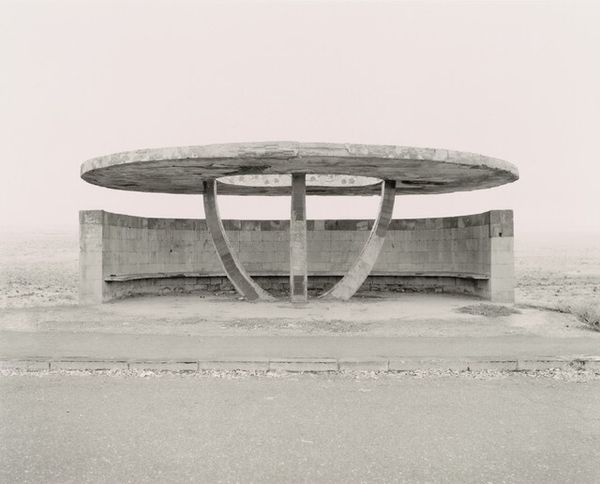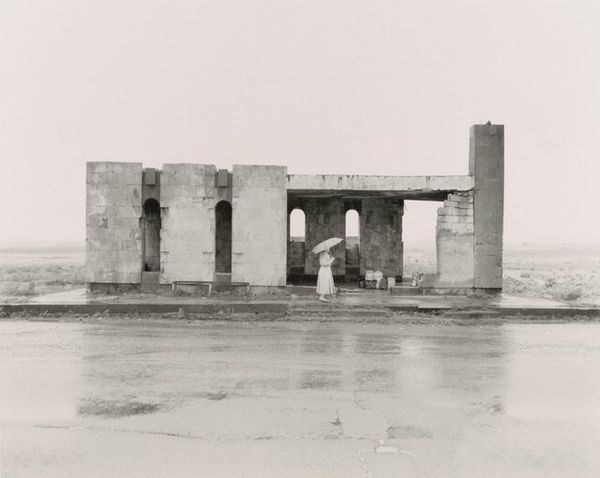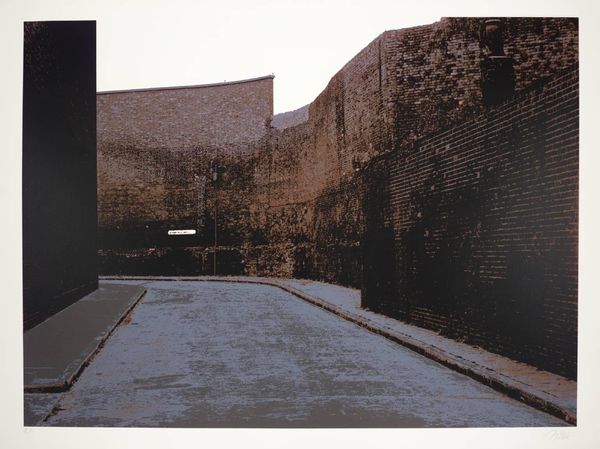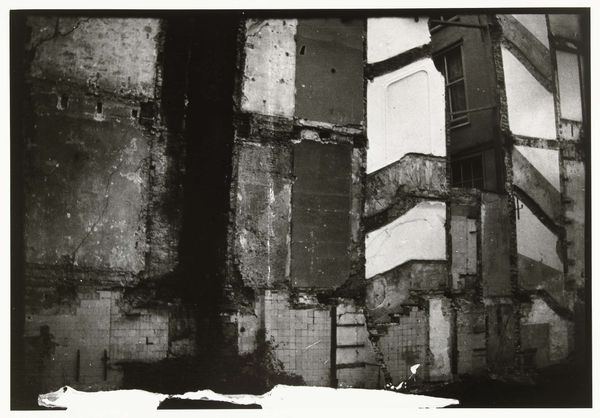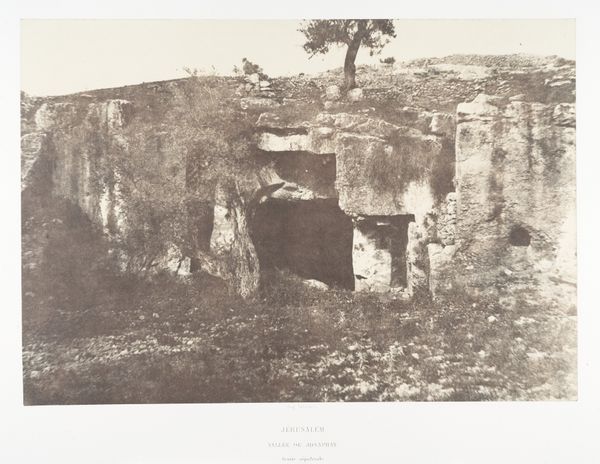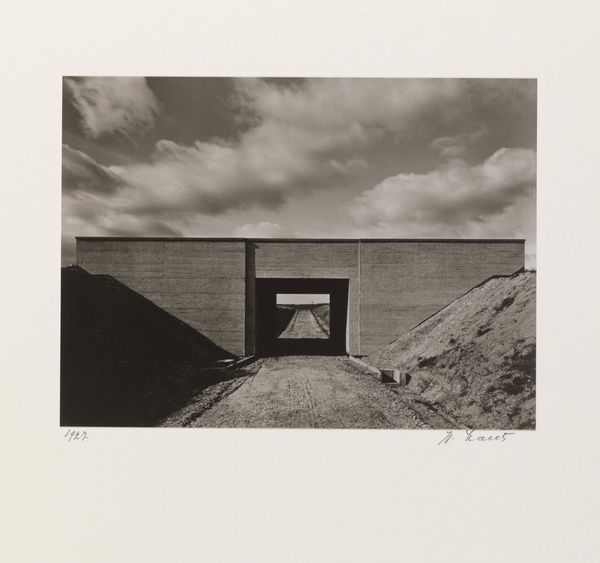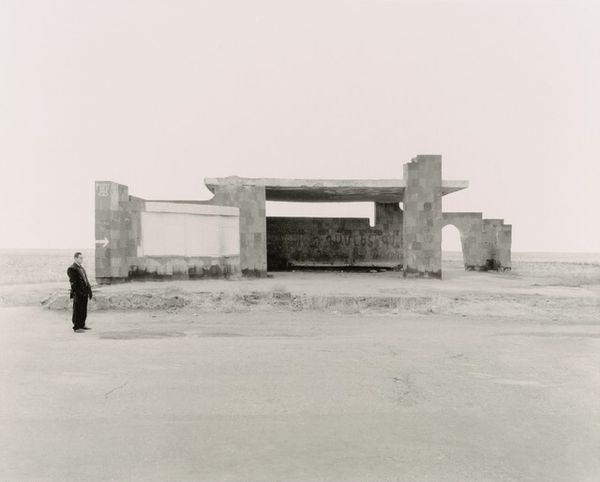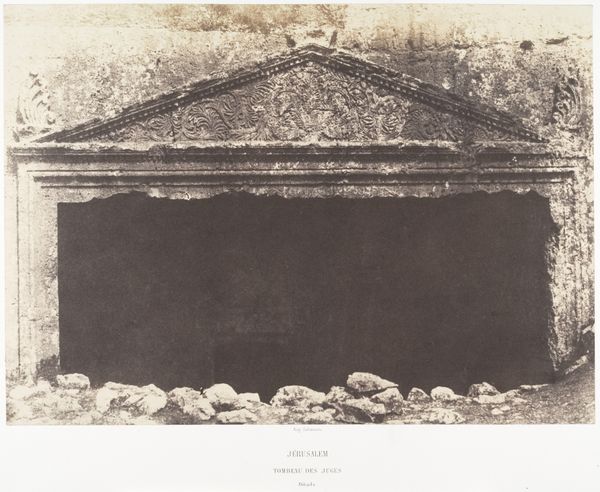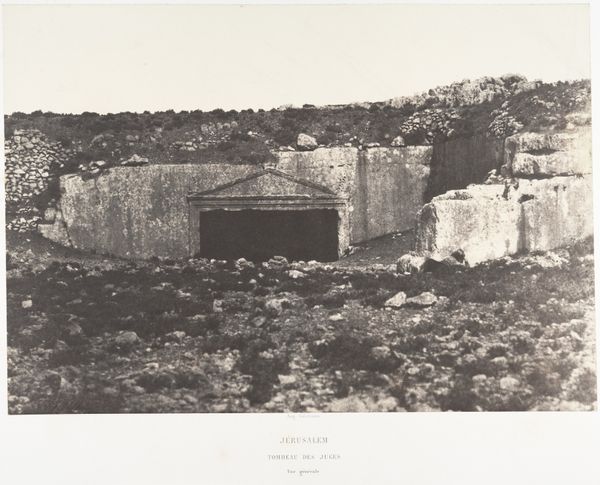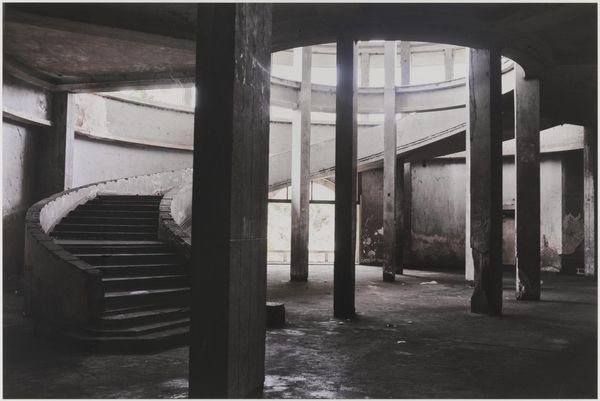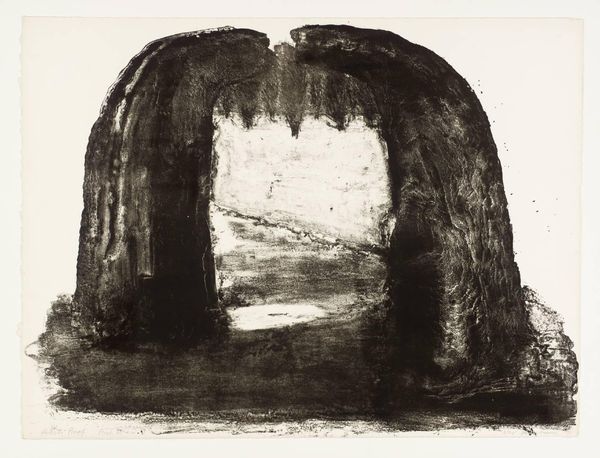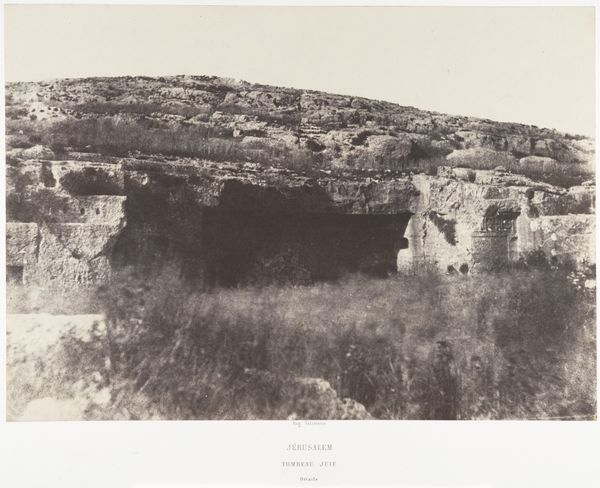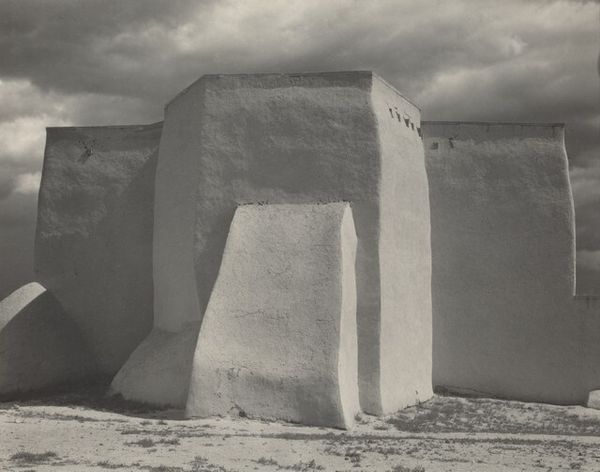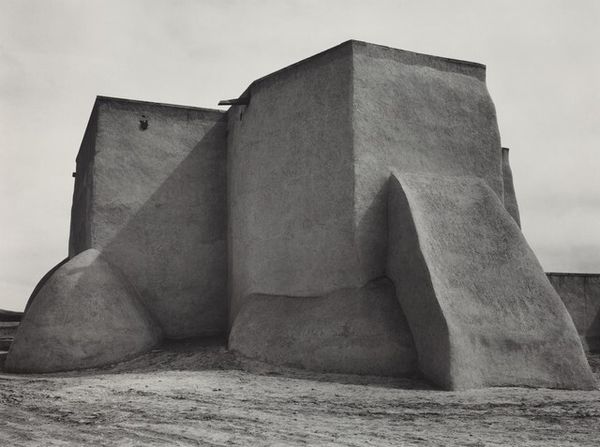
Dimensions: image: 1800 x 2900 mm
Copyright: © Jane and Louise Wilson, courtesy 303 Gallery, New York | CC-BY-NC-ND 4.0 DEED, Photo: Tate
Editor: Louise Wilson’s striking photograph, Azeville, shows what appears to be a concrete bunker. The monochrome tones really amplify the structure's imposing presence. What symbols or deeper meanings do you see embedded within this stark image? Curator: The bunker itself is a powerful symbol. It represents protection, but also confinement, fear, and the ever-present threat of violence, a scar on the landscape. Do you notice how the darkness of the opening contrasts sharply with the weathered concrete? Editor: Yes, the darkness is like a void. Curator: Exactly. It hints at the unseen, the psychological weight of war, the hidden traumas. The concrete, aged and stained, carries the memory of conflict, speaking volumes about human impact. Editor: That gives me a lot to consider about the image. Thank you for pointing that out! Curator: My pleasure. Visual symbols shape our understanding of history.
Comments
Join the conversation
Join millions of artists and users on Artera today and experience the ultimate creative platform.
tate 8 months ago
⋮
Azeville 2006 is one of a group of three large-scale black and white photographs on aluminium of the abandoned and derelict Second World War bunkers that punctuate the Normandy coastline of northern France. The other two in the group are Urville 2006 (Tate P80084) and Biville 2006 (Tate P80085). Each photograph is named after its location and records a single structure, the huge scale of the image reflecting the monumental impact of the architecture depicted. The forlorn state of the bunkers is apparent; long since used in the defence of territory, they are now besmirched with graffiti, litter and the detritus of illicit activities.
